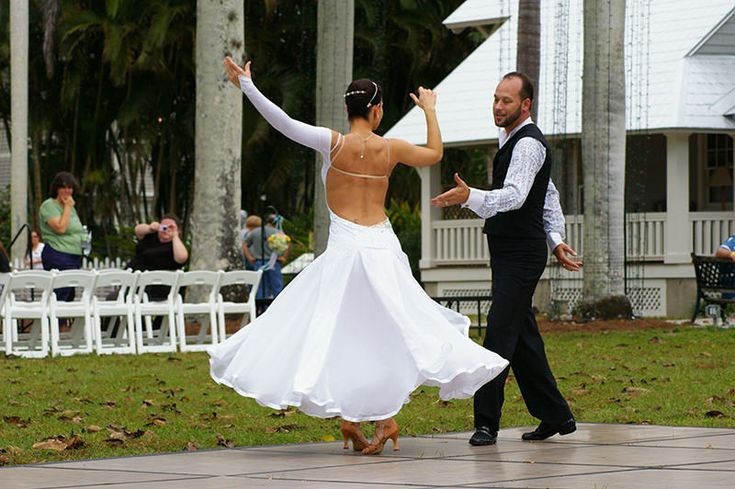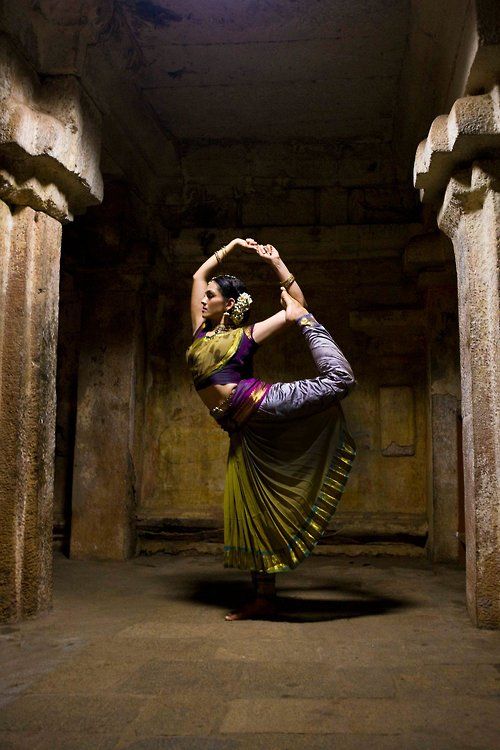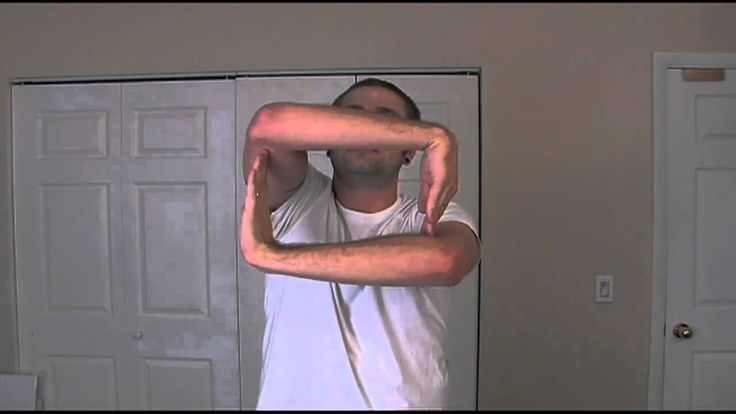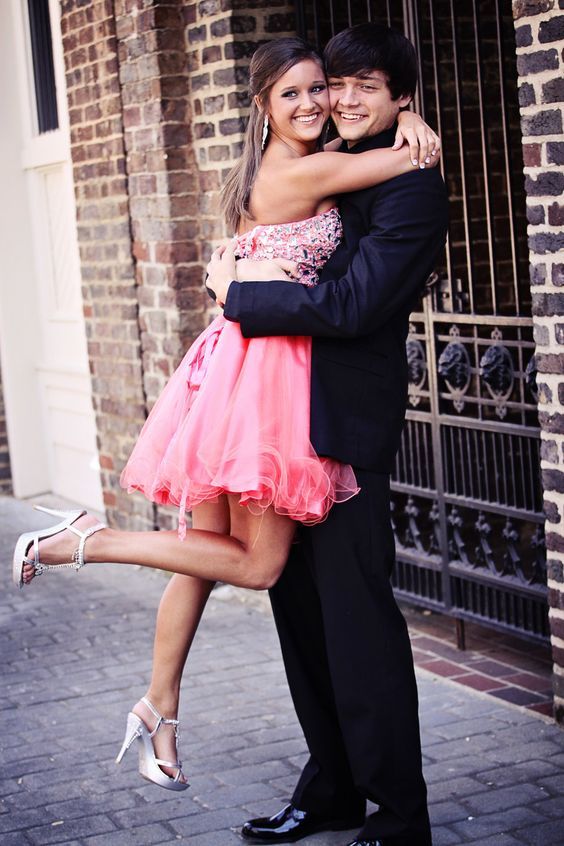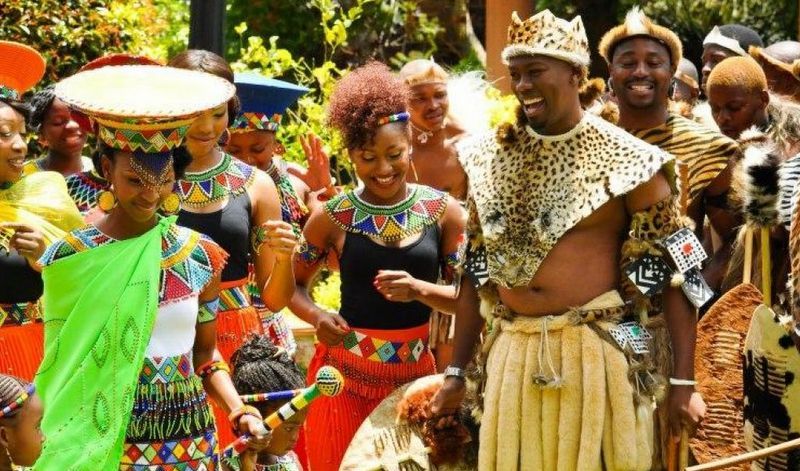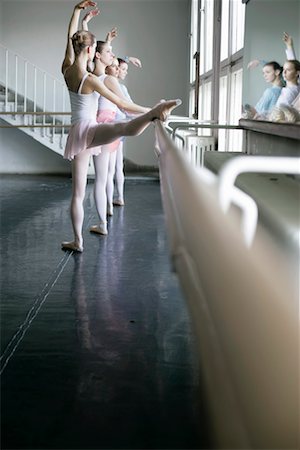How to dance wedding waltz
Wedding Waltz First Dance Tutorial - 5 Easy Steps (Video Instruction Included) — Duet Dance Studio Chicago
Waltz is one of the most classic and romantic ballroom dances and it is perfect for weddings. Wedding Waltz is fairly simple to learn even for those of you who are new to partner dancing. Let us guide you through a few easy steps to get you started with the first dance of your dreams!
1. Choose a Wedding Waltz Song
Finding a wedding waltz song can be a little tricky because of the specific time signature that waltz has. A majority of modern wedding songs have either a 2/4 or 4/4 time signature. In order to do a wedding waltz, you have to find a song that has a 3/4 time signature. Below is a video to show you how to count the Waltz timing. For beginners, we suggest finding a song that isn't too fast or too slow. Use this list of Wedding Waltz Songs that we have complied to get you started!
2. Begin with a Graceful Intro
Wedding waltz is all about being elegant and graceful. So, it's a great idea to incorporate a grand intro to begin your first dance. It will help you set the tone of your dance and make you look more confident and prepared. Below is a lovely intro idea that you can incorporate into your wedding waltz. You may also use it as an inspiration to create something more elaborate.
3. Learn the Wedding Waltz Basic
Surprisingly enough, you might already know the waltz basic. Remember the PE ballroom dance class you took way back when you were in grade school? Does the Box Step sound familiar to you? The Waltz Box Step is one of the most versatile and taught dance steps in partner dancing. Let's take a little refresher course on the box step here!
4. Incorporate a Lovely Waltz Turn
Once you have mastered the box step, it's time to spice up your first dance with a spin or two. The Under Arm Turn is an extension from the Waltz Box. It is a slow, elegant turn that gives you an opportunity to show off your gorgeous wedding gown.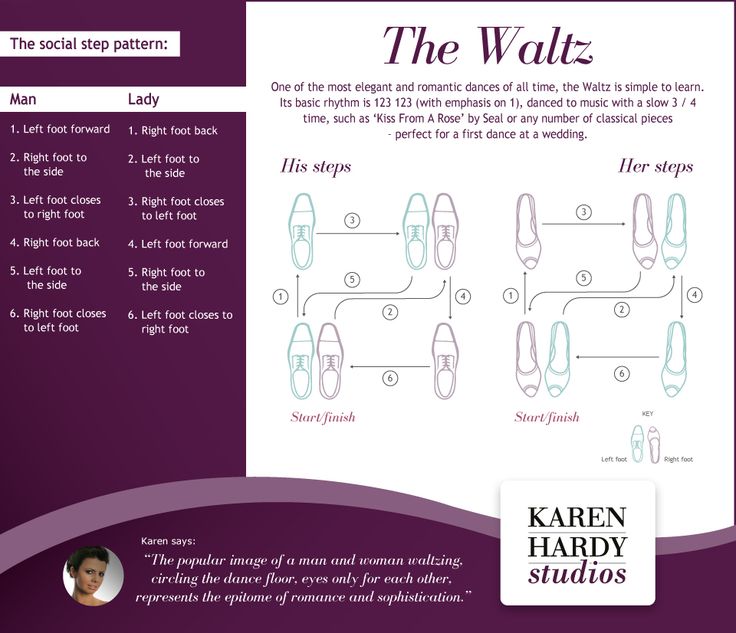 Make sure not to overdo it in your wedding dance though!
Make sure not to overdo it in your wedding dance though!
5. End with a Picture Perfect Dip
No first dance is complete without a picture perfect dip. Learn to perform the dip safely and gracefully from the video below. Make sure to pause at the dip for at least 5 seconds so that your photographer can capture this awesome moment!
WANT TO LEARN MORE? SIGN UP FOR OUR COMPLETE ONLINE DANCE PROGRAM NOW!
Learn More
Duet Dance Studio is a group of friendly dancers who are passionate about helping people and sharing the joy of ballroom dance. Our physical studio is located in Chicago West Bucktown. We offer ballroom dance lessons, wedding dance instruction and private dance parties. Online Wedding Dance Lessons and Skype dance lessons are also available! Dances we teach include Salsa, Swing, Tango, Bachata, Merengue, Waltz and Foxtrot. Sign up for an introductory dance lesson now to get started!
Szewai LeeComment
0 LikesWedding Waltz Ultimate Guide: Dance Steps & Songs
A romantic ballroom dance, the waltz is a superb choice for weddings.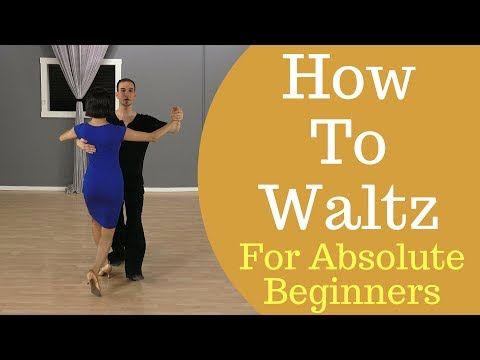 If you are considering the waltz for your wedding then allow us to help.
If you are considering the waltz for your wedding then allow us to help.
We are expert wedding dance choreographers, here to share the waltz’s background, show you the basic steps, help you pick romantic songs, and offer dance lessons that will enable you to truly enjoy dancing with your partner on your big day together!
What is the Wedding Waltz?
A waltz is a classic ballroom dance, characterized by couples rhythmically turning while stepping and sliding in the waltz box step. The word waltz comes from the German word Walzer, meaning “to revolve.” This dance is one of the easier ballroom styles to learn.
From its beginnings in the 18th century, the waltz was steeped in romance. The dance scandalized polite society by bringing men and women close together as they danced and embraced. Initial religious pushback couldn’t stop the waltz from becoming a popular ballroom dance that transcended both distance and time.
Today the waltz is still bringing couples together around the world. The waltz even has a special name when it is the first dance at weddings, the Bridal Waltz.
The waltz even has a special name when it is the first dance at weddings, the Bridal Waltz.
Time Signature of the Waltz Dance
One of the waltz’s defining traits is its unique timing. All waltz songs have 3 beats in a measure. Waltz songs are often composed with a 3/4 time signature.
4 Popular Waltz Styles to Choose for Your Wedding
American Waltz
When the waltz came to America in the 1800s, many dancers found the speed to be too fast. The dance was slowed down and the American style evolved to include theatrical arm movements and open foot patterns. American Waltz is a popular style of dance for weddings, being more accessible than some other styles and having more freeform potential.
Viennese Waltz
Originating from Europe, the Viennese Waltz is the fastest style of the waltz. It involves continuous fast turns to the left and to the right for the duration of the dance. With its high speed and complex steps, this style of waltz is not recommended for the weddings of beginner-level dancers.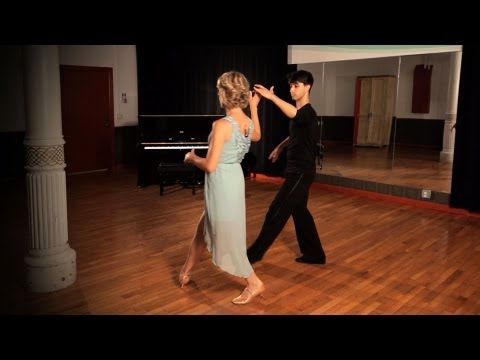
International Style Waltz
Also known as the Slow Waltz, International Style Waltz is practiced throughout the world and is popular in dance competitions. The slower pace of this style, about 84 to 90 beats per minute, makes it accessible for beginner-level dancers. This is a good style of dance to choose for your wedding if you like slower waltz music.
Country Waltz
Country Waltz is one of the faster styles. This variant of waltz features turns and spins that move in straighter lines than other styles. A feature that makes the Country Waltz suitable for country line dancing. This style of waltz is accessible to beginner-level dancers and opens the door for wedding line dances.
How to Waltz Dance
In a waltz dance, there is a leader and a follower. Traditionally the groom leads and the bride follows. If you are a same-sex, gender-diverse, or non-traditional couple, this article can help you and your partner choose who leads and who follows.
Waltz Dance Steps for the Leader
At the start of the waltz, the dancers stand a foot apart and face each other.![]() The leader places their right hand on the follower’s left shoulder.
The leader places their right hand on the follower’s left shoulder.
Leader’s Steps:
Step forward with your left foot
Move your right foot forward & sideways to the right
Bring your left foot next to your right foot so both feet are parallel
Step back with your right foot
Step back & sideways with your left foot
Bring your right foot next to your left foot so both feet are parallel
Waltz Dance Steps for the Follower
The follower moves in the opposite direction as the leader. The dancers stand a foot apart and face each other. The follower places their right hand on the leader’s left shoulder.
Follower’s Steps:
Step back with your right foot
Move your left foot backward & sideways to the left
Bring your right foot next to your left foot so both feet are parallel
Step forward with your left foot
Step forward & sideways with your right foot
Bring your left foot next to your right foot so both feet are parallel
Wedding Waltz Songs
Celebrate your wedding with the people you love and with music you will love too! It can be difficult to identify good waltz songs because of the 3/4 unique time signature.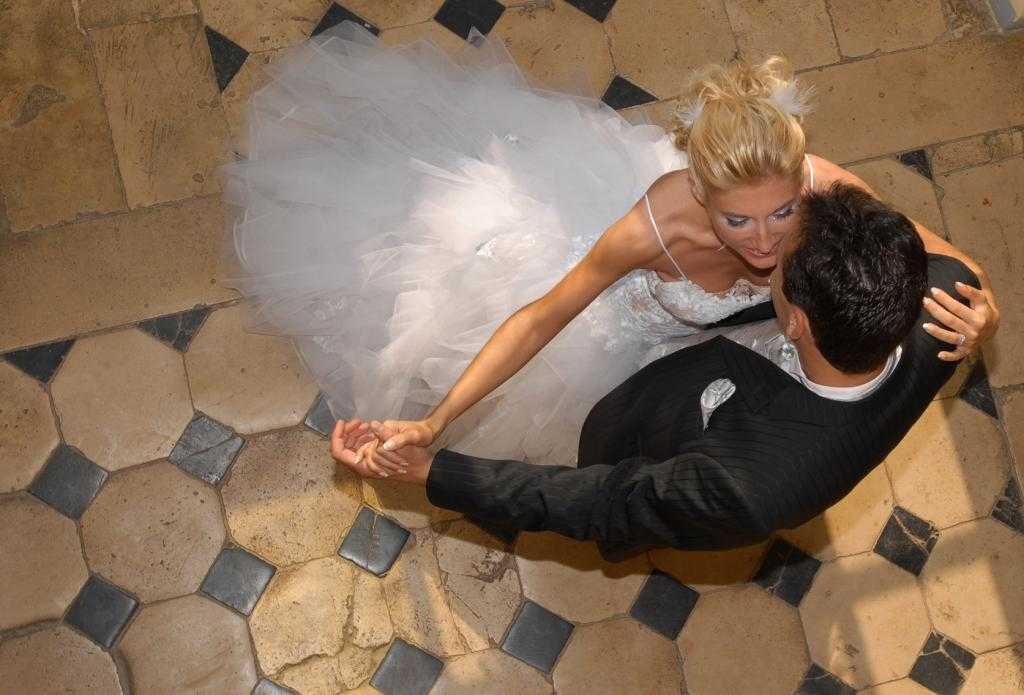 This is why we have prepared a collection of 30+ romantic waltz songs for your consideration. When selecting songs for your bridal waltz, we recommend songs that are not too fast or too slow. Try to visualize yourself stepping to the tempo as you listen.
This is why we have prepared a collection of 30+ romantic waltz songs for your consideration. When selecting songs for your bridal waltz, we recommend songs that are not too fast or too slow. Try to visualize yourself stepping to the tempo as you listen.
Classic Waltz Dance Music
Waltz has a rich history, full of romantic classical songs that can set the perfect mood for your wedding.
Johann Strauss II - The Blue Danube Waltz
Dmitri Shostakovich - Waltz No. 2
Émile Waldteufel - The Skater's Waltz, Op. 183
Piotr Ilych Tchaikovsky - Waltz from The Sleeping Beauty
Tchaikovsky - Waltz of the Flowers
Franz Lehár - Gold and Silver Waltz
Tchaikovsky - Swan Lake Waltz
Banjo Paterson - Waltzing Matilda
Franz Lehár - The Merry Widow Waltz
Frederic Chopin – Minute Waltz
Modern Waltz Dance Music
Waltz songs and romance are still blossoming today. There are many contemporary waltz songs that you can choose for your bridal waltz.
There are many contemporary waltz songs that you can choose for your bridal waltz.
Seal – Kiss From A Rose
Paramore - The Only Exception
William Beckmann - Danced All Night Long
Calum Scott - You Are The Reason
Oasis – [You’ve Got] The Heart Of A Star
Alanis Morissette – Utopia
Cockney Rebel – Sebastian
Phil Collins – Look Through My Eyes
Ed Sheeran - Perfect
The Beautiful South – One Last Love Song
Billy Joel – Piano Man
The Corrs – Runaway
Lifehouse - You and Me
Madonna – Hey You
Ellie Goulding - How Long Will I Love You
Bon Jovi – Bed of Roses
Slow Waltz Dance Music
Looking for songs that are slow and romantic? Slow dance lovers have plenty of waltz songs available to choose from.
Elvis Presley - Are You Lonesome Tonight?
Matt Nakoa - Waltz in the Dark
Norah Jones - Come Away With Me
Hildegard Knef - Für mich, soll's rote Rosen regnen
Jackie DeShannon - What The World Needs Now Is Love
Dana Glover - It Is You ( I Have Loved)
Frank Sinatra - Moon River
Elton John – Can You Feel The Love Tonight
Geoff Love & His Orchestra - Anniversary Song
Alan Jackson - I’d Love You All Over Again
Olivia Newton-John - Sam
Engelbert Humperdinck - The Last Waltz
Wedding Waltz Dance Lessons In San Francisco
Invest in the epic bridal waltz of your dreams!
We can help you become totally prepared and confident to waltz with your partner.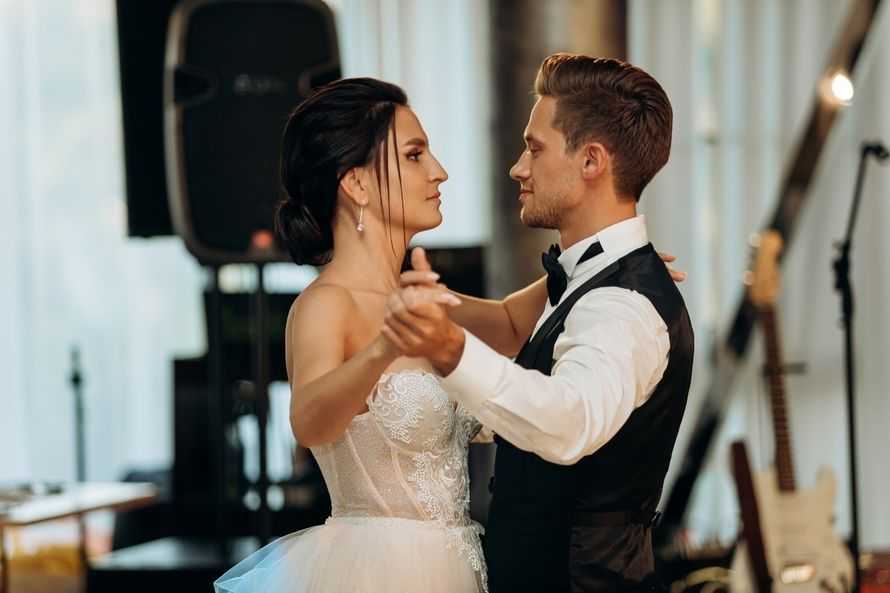 You’ll be ready to dazzle your guests and truly enjoy yourselves during the big moment of the most important day of your lives together!
You’ll be ready to dazzle your guests and truly enjoy yourselves during the big moment of the most important day of your lives together!
Learning the wedding waltz dance on your own: video lessons
Waltz is the most popular wedding dance among newlyweds. What can compare with him in beauty? With the help of our video lessons, you can independently master the basic movements and choose the musical accompaniment for your dance number. You will learn how the classical Viennese waltz differs from the English waltz and which one is preferable for beginners.
Contents
- 1 Forever young waltz for newlyweds and guests
- 2 About the waltz very briefly (“gallop across Europe”)
- 3 Rhythm and tempo of the waltz
- 4 About the main step of the waltz
- 5 About the positions in the presented composition
- 6 Confident leading
- 7 About musical accompaniment Detailed analysis of the dance composition
- 8.
 1 First figure
1 First figure - 8.2 Second figure
- 8.3 Third figure
- 8.4 Fourth figure
- 8.5 Bypassing partner and bowing
- 8.
Forever young waltz for newlyweds and guests
They say that in the good old days, when time passed slowly and people had enough time for communication, wedding celebrations were held modestly, but sincerely. And it doesn't matter that instead of a sophisticated stereo system (or a DJ with a set of sound reproducing equipment), a self-taught accordionist or an amateur orchestra created the mood for the guests. The newlyweds, their relatives, friends and relatives had enough of such music to dance with pleasure at the celebration. Because almost everyone could dance.
Today a person who can dance well is becoming a rarity. The proposed dance scheme will allow the future spouses not only to feel confident on the floor, but also to act as dance stewards, organizing for friends and guests first a kind of express waltz course, and then a synchronous and spectacular performance of the learned material (today this is called a flash mob).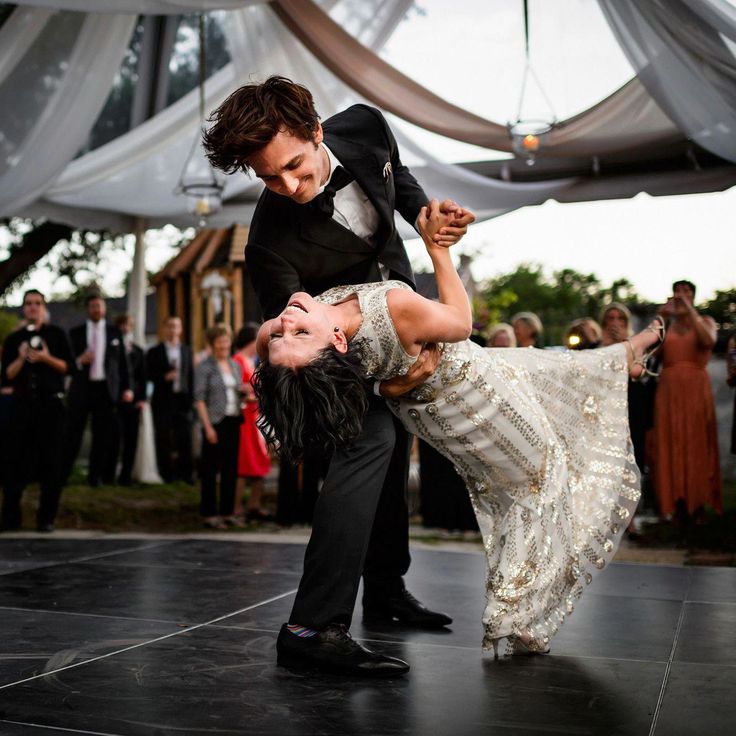 ). The movements of the dance number (the unofficial name is “50 grams”) are so simple that they can be mastered in just half an hour (especially after 50 grams of good cognac “for courage”).
). The movements of the dance number (the unofficial name is “50 grams”) are so simple that they can be mastered in just half an hour (especially after 50 grams of good cognac “for courage”).
Very briefly about waltz (“gallop across Europe”)
Several European countries – France, the Czech Republic, Germany and Austria – contributed to the birth and development of the dance. About where exactly the eternally young waltz was born, the controversy does not subside until now. Those interested can read about it here: http://tango-beregovo.blogspot.com/2015/05/blog-post_73.html
The fast waltz (better known by the romantic name of the Viennese) is a relatively simple dance. However, his speed often becomes an almost insurmountable obstacle for beginning dancers.
The British, as usual, changed the European waltz almost beyond recognition. Its main difference from the Viennese one is the rhythm slowed down by almost half and the abundance of complex spectacular figures.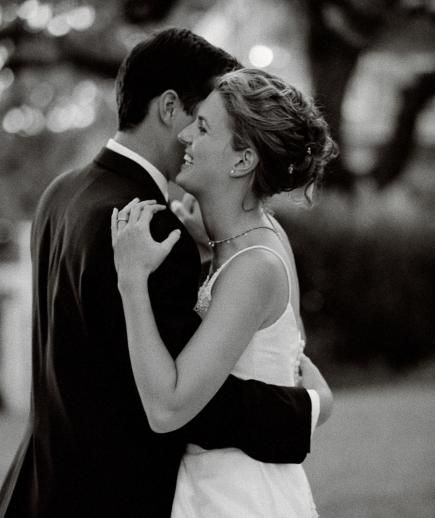 More information about the slow waltz can be found here http://tango-beregovo.blogspot.com/2015/05/blog-post.html.
More information about the slow waltz can be found here http://tango-beregovo.blogspot.com/2015/05/blog-post.html.
You are offered a simple scheme, which is played to a moderate rhythm (not as fast as a Viennese waltz, but not as stringy as an English waltz). In addition, the basic step of the dance sequence is specially simplified so that unprepared people can quickly master it.
Not sure if you can handle the waltz? You can try another dance. For example tango, salsa or cha-cha-cha.
Rhythm and tempo of the waltz
The tempo of the English waltz is 96 beats per minute, and the Viennese waltz is 180.
The basic rhythm is “one”, “two”, “three”, with an emphasis on “one”. Most often, the acquaintance of new students with the world of ballroom choreography begins precisely with a slow waltz, since the Viennese version is contraindicated for beginners because of its speed.
The tempo of the link being studied will be faster than the English Waltz, but slower than the Viennese Waltz.
About the basic waltz step
It is easy to dance the basic waltz steps because only one step is played for each beat of the measure. In the connection under study, the main step is even more simplified. The step will need to be taken on the strongest beat of the tact (account "times").
About the positions in the presented composition
In the dance, the simplest position in a pair is mainly used - training. Training and dance are also used.
As the execution progresses, the position numbers alternate. You can learn more about them here:
Confident leading
In pair dances, the roles have long been distributed - the partner leads, the lady follows. Accordingly, the partner takes the lady by the hand, and not vice versa (which is often the “sin” of overly emancipated persons).
During the performance of dance numbers and changing positions, the partner intercepts the lady's hand in different ways to make it more convenient to lead her. Partners need to try not to grab each other like a lifeline. So short and before injury!
Confidence on the floor is gained by numerous trainings.
At the end of the preparation, it is advisable to have several general rehearsals in wedding suits and shoes (it is advisable to immediately eliminate all noticed shortcomings), and without fail in the presence of several spectators. After a series of rehearsals, the newlyweds will feel freer at a real performance.
Here is the whole composition:
And here is its detailed analysis with all the nuances:
About the music
Look for a Viennese waltz at a moderate speed. Or deliberately slow down the melody you like.
Detailed analysis of the dance composition
The first figure
Starting position - the partner holds the lady by the hands in the training position. The position does not change during the execution of the figure:
- On the count of “one” of the FIRST measure (1-2-3), the partner takes a step to the side from the left leg, pulling the right one towards it (without transferring the body weight to it).
- On the count of "one" of the SECOND measure (1-2-3), the partner takes a step to the side from the right leg, pulling the left one towards it (without transferring the body weight to it).
- Then the partner, on the count of “ones” of the THIRD and FOURTH measures, steps to the side with the left foot, in the interval putting the right one with the transfer of body weight.
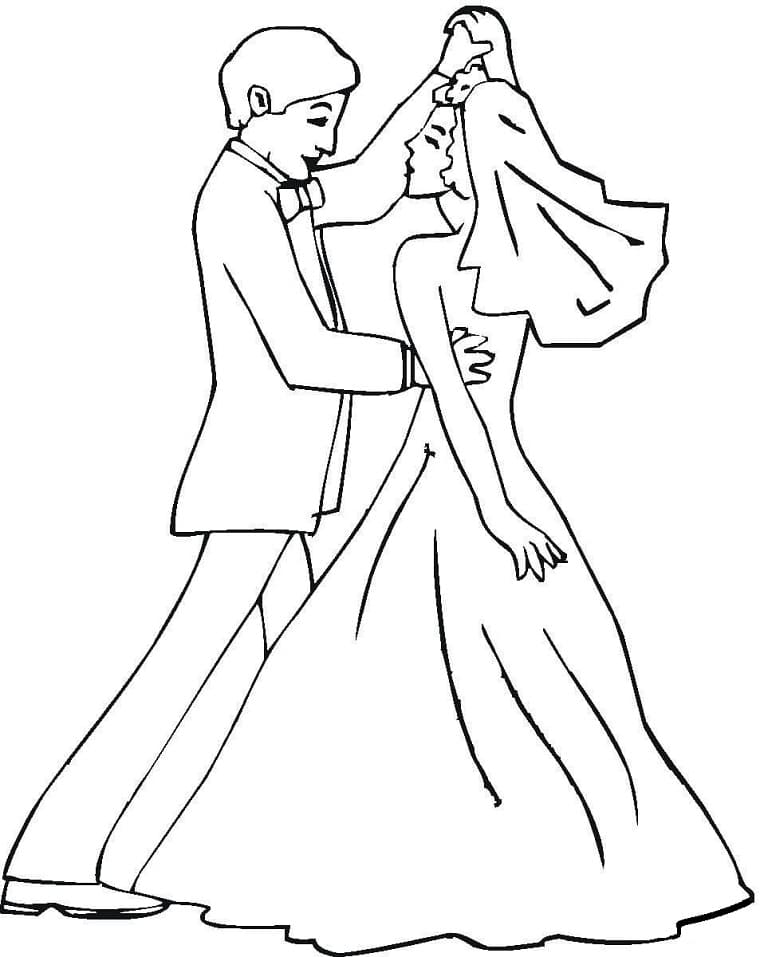
Total: to the left side (L) - to the right side (R) - to the left side (L) - put the foot with body weight transfer (R) - to the left side (L). The lady has all the opposite steps.
Then we do the same to the right side from the right leg: to the right side (R) - to the left side (L) - to the right side (R) - put the leg with body weight transfer (L) - to the right (R).
Second figure
Performed in the training position.
The partner's steps are identical to the first. But leading the partner is already more difficult:
- Simultaneously with the step to the side, the partner releases the partner's hand and slightly turns the body to the left.
- Returning to the right leg, the partner turns the body towards the partner. At the same time, the hands of the partner and the lady rest against each other with their palms.
- During a double step to the side, the partner rotates the partner under his right hand, helping the rotation with his left hand.

- Then the same movements are performed on the other side.
At the end of the figure, the partner, being in front of the partner, shifts her right hand from his left to the right. The left hand of the partner is laid behind the waist. The partner grabs the edge of her skirt with her left hand. This position is used in figured waltz.
Third figure
- The partner and the partner in the first three go to each other (from the right foot to the count of “one”), without placing a foot.
- On the second three - from each other (from the left foot to the count of "one").
- Then the partner and the partner move past each other for two triples, at the last moment turning to face each other. With which foot the movement will begin and the number of steps does not really matter. Although it is desirable to take one step in the first three of the transition for each blow (the partner and the partner pass by each other), and spend the second three on turning towards each other.
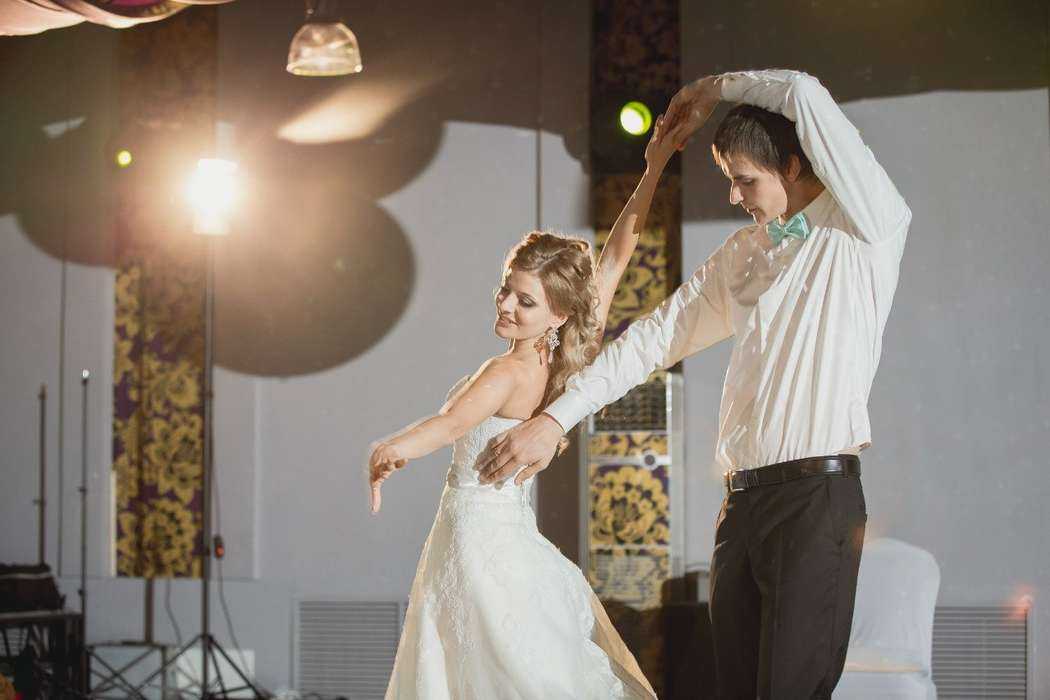
- We repeat, only on the second triple the partner shifts the partner’s right hand to his left. And he takes the lady by the spatula with his right hand, and she puts her left hand on the partner’s shoulder (transition to a dance position).
Fourth figure
For four triples, the partner takes four steps without attaching and transferring body weight. The beginning of the movement is from the step of the partner with the left foot back. He carries the lady along with him, gradually turning to the right along the way (for four triples, the couple needs to turn completely around its axis).
Then the partner raises his left hand up and turns the partner under her, helping her with his right hand. For two triplets - two turns. During the turns of the partner, in order to avoid dizziness, it is advisable to look at the partner as long as possible.
Something like this:
Then the couple returns to the dance position.
Four steps for four threes with a complete rotation of the pair around its axis are repeated. Two turns under the arm are also repeated. After them, the partner lowers his left hand and intercepts the right hand of the partner with his right hand (figure waltz position).
The lady walks around the partner and bows
The partner leads the lady with his hand, prompting her to completely go around herself. Performed in four triples. The number and speed of steps are not regulated. The main thing for the partner is to comfortably and elegantly go around the partner.
The partner at the same time gives way to her, taking steps to the side without transferring body weight:
- 1-2-3 Left;
- 1-2-3 Right;
- 1-2-3 Left;
- 1-2-3 Right
If the dance is performed not only by young people, but also by witnesses (two or three couples are enough, although the more the better), then the partners, after the partners go around them, send their ladies to the neighboring partner (who is standing on the right).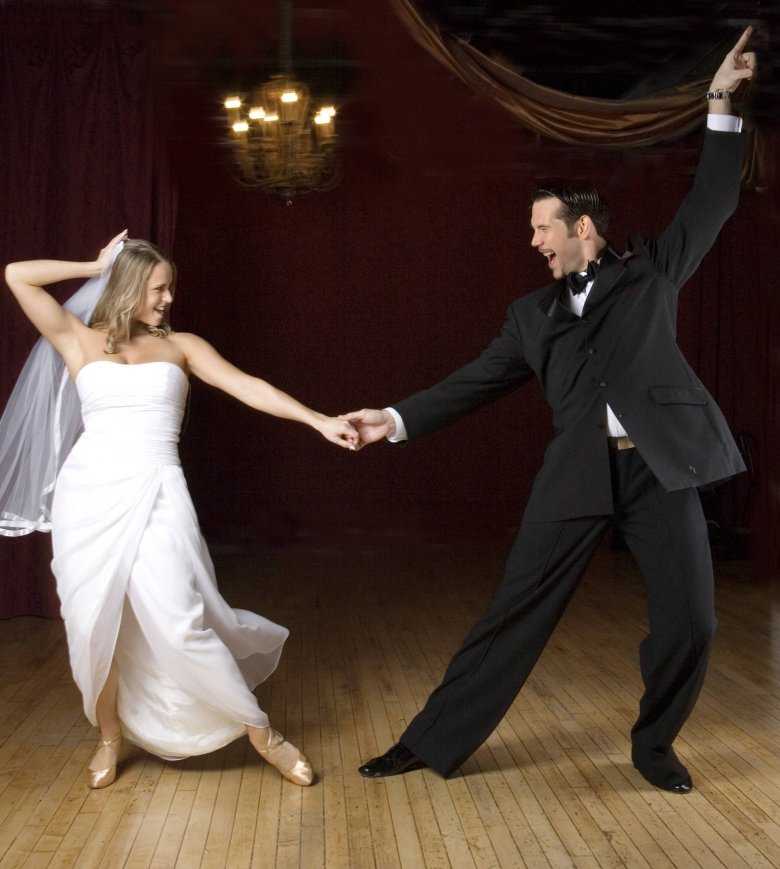 So you can perform a bunch several times in a row, each time with a different partner. To do this, the pairs must be arranged as follows:
So you can perform a bunch several times in a row, each time with a different partner. To do this, the pairs must be arranged as follows:
Partners with their backs to the center, spread evenly over a small circle.
Ladies facing the center, in front of their partners.
The number can be used as the first dance of young people, as a pre-rehearsed number of newlyweds and bridesmaids with their young people. You can also organize something like a flash mob for guests. Learning dance will take quite a bit of time, and joint performance will enliven the wedding, and leave pleasant memories for a lifetime.
Have a beautiful wedding waltz!
How to put a wedding dance
- +7 812 565-45-32
- St. Petersburg
- Lakes
- Civil
- Parolovo
Yes, you can! For those who want to take the risk and try to stage their first dance on their own, I want to give some useful tips. I hope that they will help you competently plan and stage a harmonious wedding dance!
This article will be useful both for those who already know how to dance a little, and for those who are very enthusiastic and want to try their hand and come up with the dance of their dreams on their own.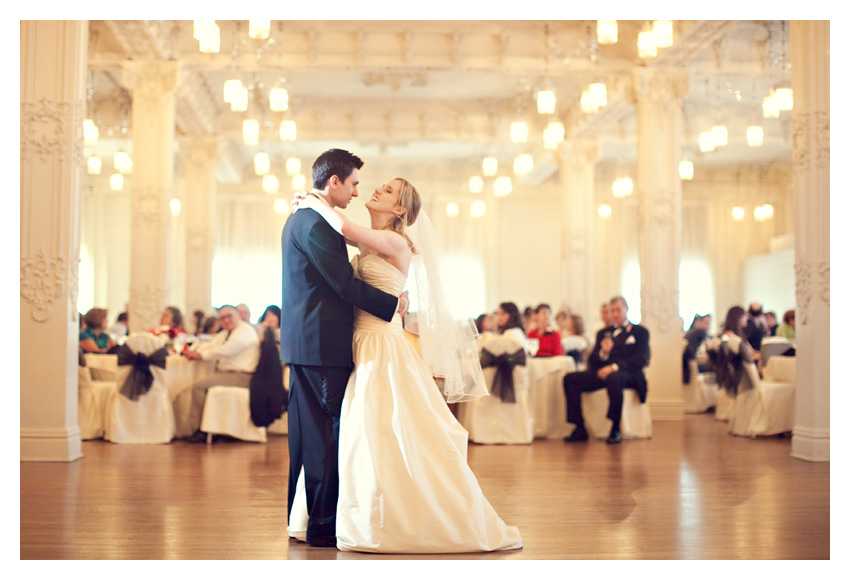
So, what should be assessed and considered before proceeding with the production?
Size of the dance floor and height of the ceilings
If your dance floor is small, then when staging the dance, you should avoid moving around the ballroom, choosing more compact dance figures for your composition.
At the same time, if your venue is large, it is advisable to include several figures in your dance, in which you will actively move around the hall, thus visually filling the space.
Let's take a simple example: a wedding dance set to the tempo of a fast (Viennese) waltz. For the case if you have a small dance floor, you should stop at the “figured waltz” option, performing the figures without advancing, and performing the waltz itself “in a square”.
If you have a large area, I suggest including a big circle waltz.
Ceiling height is important for high supports, the simplest of which is lifting the bride in her arms.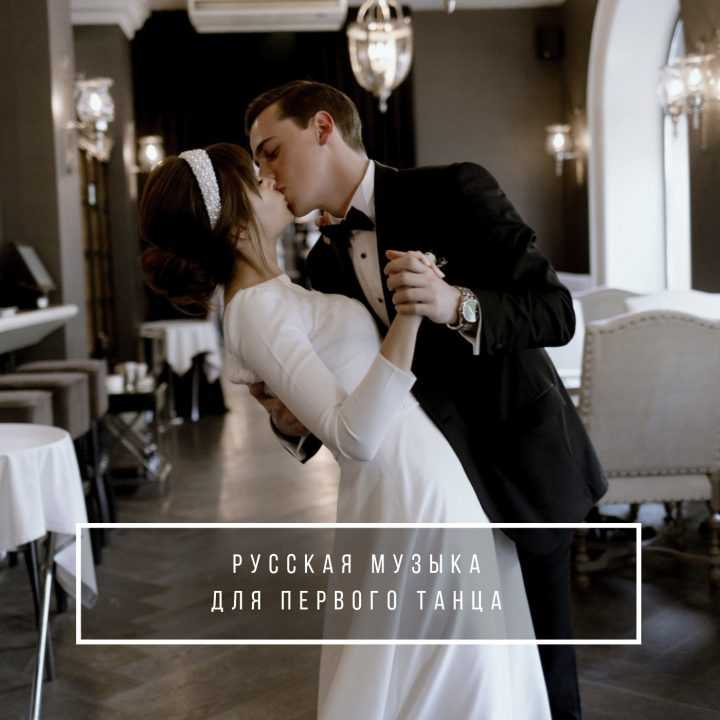 Before performing such support, you need to make sure that the height of the ceilings allows it. For example, in some restaurants and on steamboats, it is problematic to perform high lifts.
Before performing such support, you need to make sure that the height of the ceilings allows it. For example, in some restaurants and on steamboats, it is problematic to perform high lifts.
Viewer's side
All your movements, and especially postures, should be laid out in directions and oriented to the "spectator's" side. To begin with, determine the configuration of your dance hall, the place where you will go to dance, the place where the main part of the audience will be concentrated, where the photographer and videographer will stand.
All your poses must be performed facing the audience. To do this, you need to decompose your dance into directions, so that for the performance of certain figures you find yourself facing your audience.
If you have 2 or more spectator sides, then you need to decompose your dance so that you alternately dance to one or the other spectator side. Preference should be given to the side where the photographer and videographer will stand.
Music
You can put the dance to any music you like. It should be borne in mind that it consists of musical phrases, which in turn are divided into measures. The main rules that I recommend to follow in order to achieve the musicality of your performance:
a) As soon as a new musical phrase begins, you must change the movement type. The simplest example: while the singer is singing one phrase, you make one movement, when he starts singing another phrase, you start making another movement. Most often in musical compositions there are verses, choruses and losses. They usually consist of several musical phrases.
b) Play with musical accents and puffs. Accents (beats in music) are perfectly played with rapid hand movements, a sudden stop in movement, or a sharp change in direction. Puffs are best suited for “smeared” smooth poses.
c) Within each musical phrase there are several measures (most often the time signature for modern compositions is 4/4, for a waltz 3/4).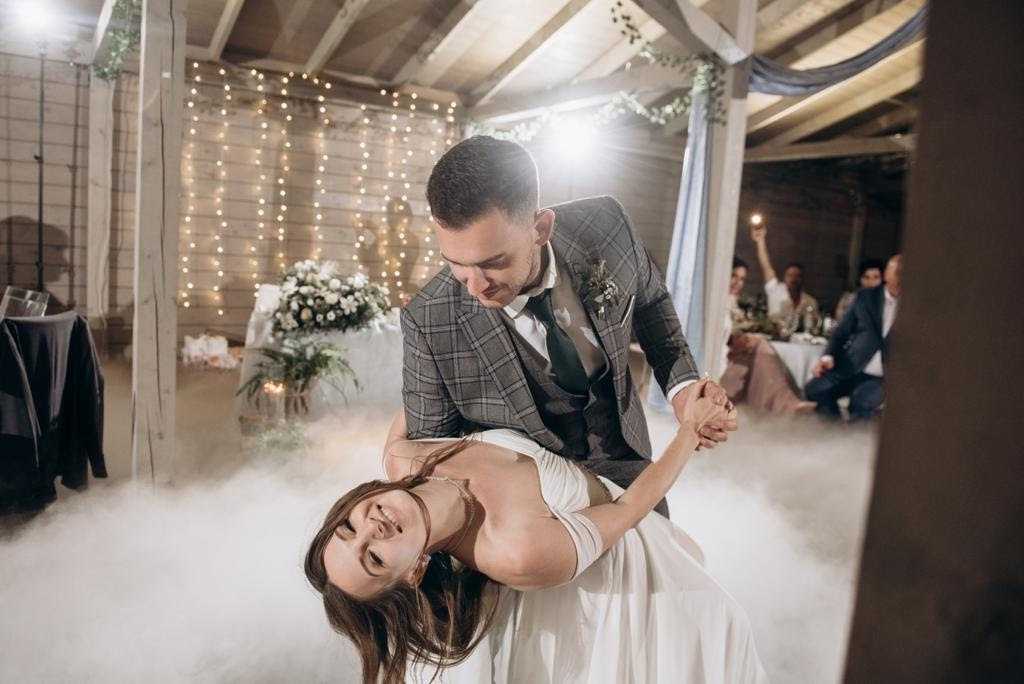 Try to hear them, isolate and decompose your movements into strokes, achieving clarity of execution.
Try to hear them, isolate and decompose your movements into strokes, achieving clarity of execution.
Before decomposing your movements into music, I recommend doing a musical dictation: decomposing your music into phrases, measures, highlighting accents and puffs. And then to impose on them movements.
Duration
Suggested duration of the dance: about 3 minutes including entering the platform and bowing. If your musical composition is longer, then it is worth trimming it using software tools. A longer dance rarely looks good: the audience gets tired and the effect of the first impression is lost.
If you fundamentally do not want to shorten your melody, then I recommend inserting some pantomime scenes into it for contrast (scenes of a meeting, farewell, quarrel, reconciliation). This will advantageously set off the dance part and help make your performance more intense and interesting for the audience.
Physiology of the bride and groom
The appearance of the couple is very important for creating a harmonious dance.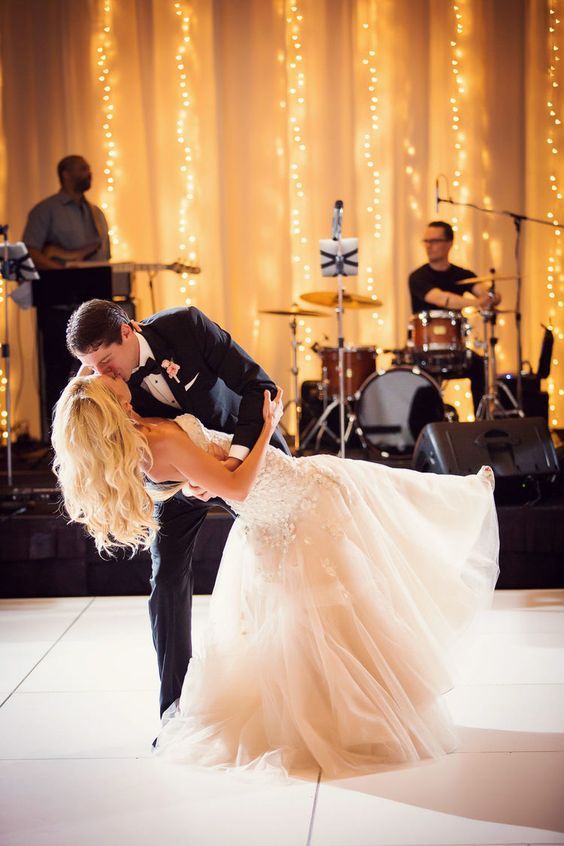
Couples in which both the bride and groom have an ideal athletic physique and an ideal difference in height (10-15 cm) are few. All dance figures will suit these lucky ones.
But if your pair has features, then they must be taken into account and beaten, using 100%!
For example, for couples in which the groom is much taller than the bride (the difference in height is 20 cm or more), elements in which the groom goes down (visually becomes lower) and the bride remains standing will look very good. Also, for such a couple, support with rotation on the hands will look great, in which the bride is taken in her arms facing the groom (see photo above).
If there is a small difference in height between partners in a couple or the bride is taller than the groom, then supports are perfect for you, in which the bride deviates, and the groom remains standing straight. Elements in which the girl sits down on bent knees facing the groom will also look good. Rotation on the hands for such a pair is best done in a position when the girl is picked up sideways.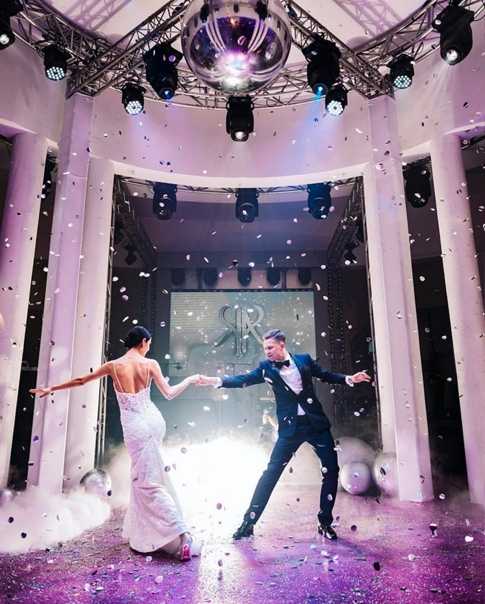
In couples where the bride has a more dense physique than the groom, we recommend avoiding elements with the bride lifting on her hands, in this case it is better to focus on the plasticity of the partner’s movements and courageous lines in the partner’s positions.
Video work
If you are staging your own wedding dance, you will most likely be using video material. It would be a big mistake to simply copy the movements from someone else's dance.
When watching a video, be sure to select those movements that you understand how beautiful and correct to perform and avoid complex and incomprehensible elements.
You should also be aware that what looks easy and beautiful in a professional performance, for beginners, it may not look advantageous at all.
Consider whether the movements you like are suitable for your couple, whether you perform them well. Take a video of yourself and compare the resulting picture with the original. Leave only those movements that you are good at.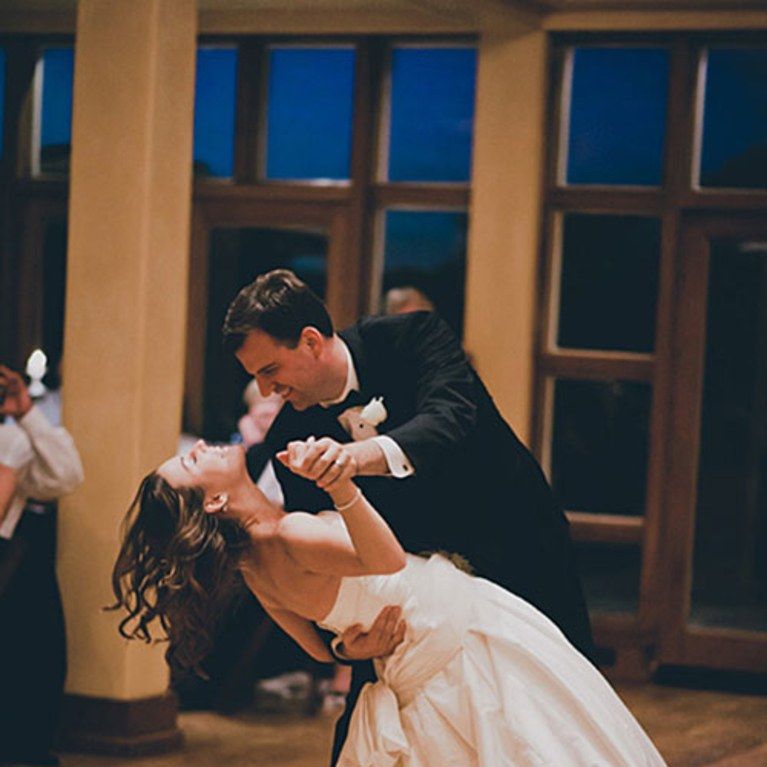
Advice for girls
Girls, think about the features of your wedding dress when staging a dance. If the dress is tight, then you should wear a tight skirt at the rehearsal in order to immediately avoid movements that you basically cannot do in this dress.
If you have a crinoline dress, then wear a crinoline at rehearsal so that you and your fiancé get used to its size. Remember that the crinoline creates some distance between you in the dance, as well as inertia in the rotations.
If you have a train - then you need to either stab it or support it with your hand. Accordingly, during rehearsals, always keep something in the hand that will be occupied by the train. Often the choice of movements for a wedding dance is largely dictated by the bride's wedding dress!
Time
If you are working on your own wedding dance, you need to start staging about 2 months before the wedding. Chances are you won't have much time right before the wedding, and a good staging is time-consuming (especially if you don't have any dance experience), so it's best to start working on the dance early.